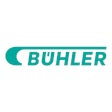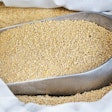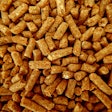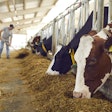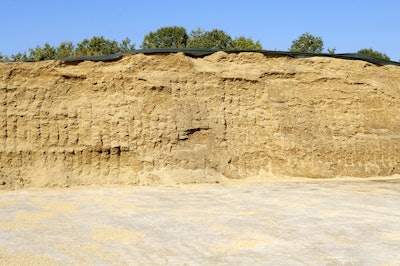
The optimal moisture concentration for silage depends on the type of crop and specific conditions, but for cereal crops such as corn and sorghum frequently used in total mixed ration (TMR) for dairy and beef cattle, the general recommendation is to harvest them at a moisture content between 60% and 70%. This range is considered suitable for proper fermentation and preservation of the silage. However, each silage-oriented hybrid has – or should have – its own guidelines about when it is best to harvest it.
In general, however, if the moisture content is too low, it may result in poor fermentation and difficulties in packing the silage properly, leading to increased spoilage and dry matter losses. On the other hand, if the moisture content is too high, there is a risk of undesirable fermentation, such as butyric acid fermentation, which can affect the quality and palatability of the silage. In our experience, the latter is more common than the former.
In addition, it remains important to monitor crop moisture regularly, especially during the harvest period, and adjust harvesting practices accordingly. Factors like weather conditions, crop maturity and equipment capabilities can also influence the optimal moisture content for silage. For specific recommendations based on your location and conditions, consulting with local agricultural extension services or a nutritionist would be beneficial.
When using corn and sorghum silage in TMR for dairy and beef, there are several factors to be aware of to ensure optimal nutrition and animal performance. Here are some key considerations that we have found are worth keeping in mind.
Nutrient content
Monitor the nutrient content of the silage regularly, including protein, energy, fiber and mineral levels. Adjust the ration composition based on these analyses to meet the specific nutritional needs of your livestock. Assuming a book value for nutrients, or even worse, that these values do not change as silage matures often leads to disappointments.
Fermentation quality
Silage is not always a successful practice. Paying attention to fermentation quality is key to obtaining high-quality silage with its full nutrient complement. Well-fermented silage has a mild, sweet smell, while poorly fermented silage may have a sour or butyric acid odor. Proper fermentation is crucial for preserving nutrients and maintaining palatability.
Particle size
Consider the particle size of the silage in the TMR as this can affect rumen functionality, especially if silage is the only forage in TMR. Ideally, the particles should be of uniform size to promote effective rumination and digestion. Fine chopping or processing may be required for optimal utilization, but too fine processing may unbalance rumen fermentation.
Inoculants
Some silage cereal hybrids benefit from the use of silage inoculants to enhance fermentation and improve aerobic stability. Inoculants can help reduce spoilage and maintain silage quality during storage and feeding. However, not all products are the same, and the same product that works on one cereal provides no guarantee that it will work equally well on another.
Storage and feedout practices
Ensure proper storage conditions to prevent spoilage and mold growth. During feedout, avoid exposing silage to air for extended periods to minimize nutrient losses and maintain feed quality. Removing only what is to be fed for one day is the maximum.
Balancing rations
Balance the TMR ration to meet the specific nutritional requirements, especially if young and older animals are mixed and fed one single ration. Consider factors such as age, weight, production stage and health status of the animals if you can afford to feed multiple rations.
Testing and analysis
Conduct regular forage testing and nutritional analysis to assess the quality of the silage. This information can guide adjustments to the TMR formulation to meet the changing needs of the animals.
By paying attention to these factors and making necessary adjustments, you can optimize the use of corn and sorghum silage in TMR rations for dairy and beef cattle, promoting better animal health and performance.






